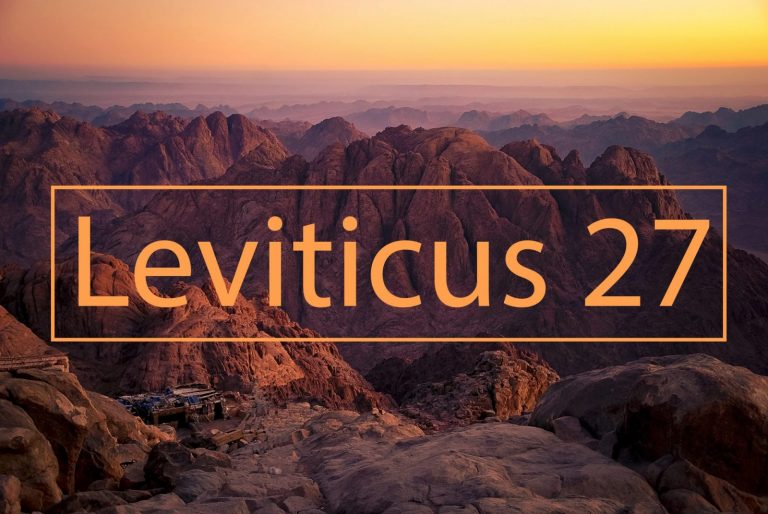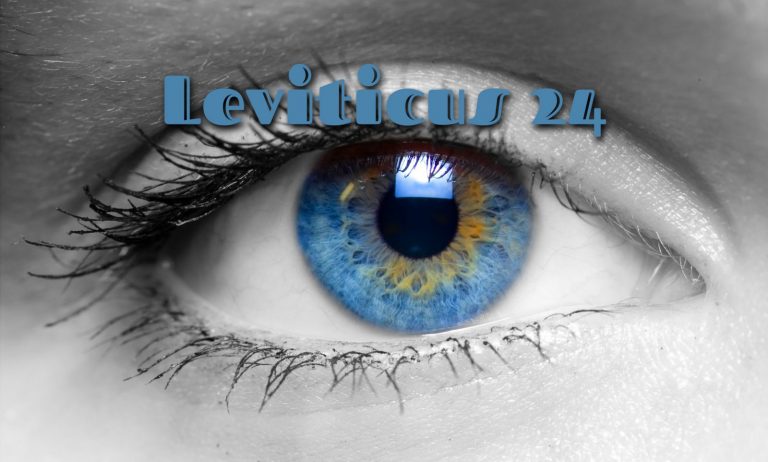Laws for Burnt Offerings
1 The LORD called Moses and spoke to him from the tent of meeting, saying, “Speak to the people of Israel and say to them, When any one of you brings an offering to the LORD, you shall bring your offering of livestock from the herd or from the flock.
“If his offering is a burnt offering from the herd, he shall offer a male without blemish. He shall bring it to the entrance of the tent of meeting, that he may be accepted before the LORD. He shall lay his hand on the head of the burnt offering, and it shall be accepted for him to make atonement for him. Then he shall kill the bull before the LORD, and Aaron’s sons the priests shall bring the blood and throw the blood against the sides of the altar that is at the entrance of the tent of meeting. Then he shall flay the burnt offering and cut it into pieces, and the sons of Aaron the priest shall put fire on the altar and arrange wood on the fire. And Aaron’s sons the priests shall arrange the pieces, the head, and the fat, on the wood that is on the fire on the altar; but its entrails and its legs he shall wash with water. And the priest shall burn all of it on the altar, as a burnt offering, a food offering with a pleasing aroma to the LORD.
“If his gift for a burnt offering is from the flock, from the sheep or goats, he shall bring a male without blemish, and he shall kill it on the north side of the altar before the LORD, and Aaron’s sons the priests shall throw its blood against the sides of the altar. And he shall cut it into pieces, with its head and its fat, and the priest shall arrange them on the wood that is on the fire on the altar, but the entrails and the legs he shall wash with water. And the priest shall offer all of it and burn it on the altar; it is a burnt offering, a food offering with a pleasing aroma to the LORD.
“If his offering to the LORD is a burnt offering of birds, then he shall bring his offering of turtledoves or pigeons. And the priest shall bring it to the altar and wring off its head and burn it on the altar. Its blood shall be drained out on the side of the altar. He shall remove its crop with its contents and cast it beside the altar on the east side, in the place for ashes. He shall tear it open by its wings, but shall not sever it completely. And the priest shall burn it on the altar, on the wood that is on the fire. It is a burnt offering, a food offering with a pleasing aroma to the LORD.
(ESV)
Leviticus 1 Commentary
by Brad Boyles
The book of Leviticus picks up right where Exodus left off. The opening verse begins with “Then the Lord called to Moses…” ‘Then’ signals us to look back at the end of Exodus which paints the landscape for this book.
Historically, Leviticus would have been the first book that Jewish children studied in the synagogue. In modern church history, it tends to be one of the least read and least studied books of the Bible!
This is because of its perceived lack of relevance in today’s culture. It was primarily concerned with rituals, sacrifices, and regulations regarding priests. For this reason, even many commentaries have avoided the book, considering it an afterthought among Old Testament manuscripts. What can ancient Jewish rituals provide for the 21st century western Christian? That seems like a difficult question, but let’s dig in.
First, we must remember that every detail of the law in the Old Testament is a preface to the fullness of Christ Jesus our Savior. He is the fulfillment of the law. Second, the Bible is authentic and verifiable when placed alongside real-world history. We get a glimpse into the Jewish worldview which differed greatly from other people groups in the eastern realm. We get to see a picture of God interacting with His people.
I know that it may seem boring and outdated but if you’ve read this far, congratulations! I am vowing to you, the reader, to use all of my energy and discernment to bring a modern take to this seldom studied book. In each of my blog posts, I will attempt to connect the text of Leviticus back to our relationship with Jesus Christ. I believe God will be faithful to instructing us as we read and study together.
The Burnt Offering
With all that said, Leviticus 1 opens by addressing the burnt offering. In the OT, the burnt offering was to serve as an atoning sacrifice for man’s sin. A Jewish worshipper would confess his sins while placing his hands upon the animal’s head. God accepted the animal (most often a lamb) as a ransom for man’s sin. This continual process highlighted the sinful nature of man and reminded God’s people of His holiness. The long-term goal of the burnt offering was for man to acknowledge and repent of his sin while actively resolving to change and live according to God’s law.
In the NT, ‘burnt offering’ is mentioned in only two passages (Mark 12:33 & Hebrews 10:6-8). In Ephesians 5:2, Paul utilizes the same kind of language presented here in Leviticus…
and walk in love, just as Christ also loved you and gave Himself up for us, an offering and a sacrifice to God as a fragrant aroma. Though the priests offered many imperfect animal sacrifices for the forgiveness of sin, Christ came without blemish or spot to be the final sacrifice for sin.
Ephesians 5:2 NASB
Peter also writes along the same lines as Paul…
For you know what was paid to set you free from the worthless manner of life handed down by your ancestors. It was not something that can be destroyed, such as silver or gold;
1 Peter 1:18 GNB
In Jewish theology, the willingness for Abraham to sacrifice his son Isaac (though God stopped him), was elevated as a powerful and significant event. It paved the way for the forgiveness of the nation but it also foreshadowed the extreme sacrifice of Christ who would willingly lay Himself down. In NT theology, Jesus fills the role of Isaac and God fills the role of Abraham. Jesus is the final burnt offering needed to destroy sin.
The imagery of a burnt offering is also used in the NT to symbolize our own responsibility as Christians to lay down our lives for the sake of the Gospel. This metaphor stretches across all aspects of a believer’s walk including church investment, service, community, and evangelism.
Just as the burnt offering was offered daily for forgiveness, the modern Christian must also understand the need for daily forgiveness from God. That forgiveness is no longer dependent on an animal as a burnt offering because Jesus is the only true (once and for all) burnt offering. Just as the burnt offering was offered at the beginning of the day, the modern Christian must understand that forgiveness comes before worship. We can’t enjoy true fellowship with God without His forgiveness accomplished through Christ.
Do you begin your day with a burnt offering? Do you begin your day with confession?
If, then, we say that we have fellowship with him, yet at the same time live in the darkness, we are lying both in our words and in our actions. [7] But if we live in the light—just as he is in the light—then we have fellowship with one another, and the blood of Jesus, his Son, purifies us from every sin.
1 John 1:6-7 GNB




